Congrats! The work in this thread is really impressive and beautiful.
This was the first high, but not the last bird I made. We did a lot of r&d for this with the feathering system. This was one of the early projects rendered in arnold. In this job each feather had every single fiber modeled in full geometry, and instanced. I sculpted the baby bird.
The Duck was another bird commercial for aflac. They were trying out a cg duck instead of the puppet duck, that would allow more dynamic movements. Good think I went a bit crazy and sculpted the details of the bottom of the foot because its front and center in camera in the final commercial.
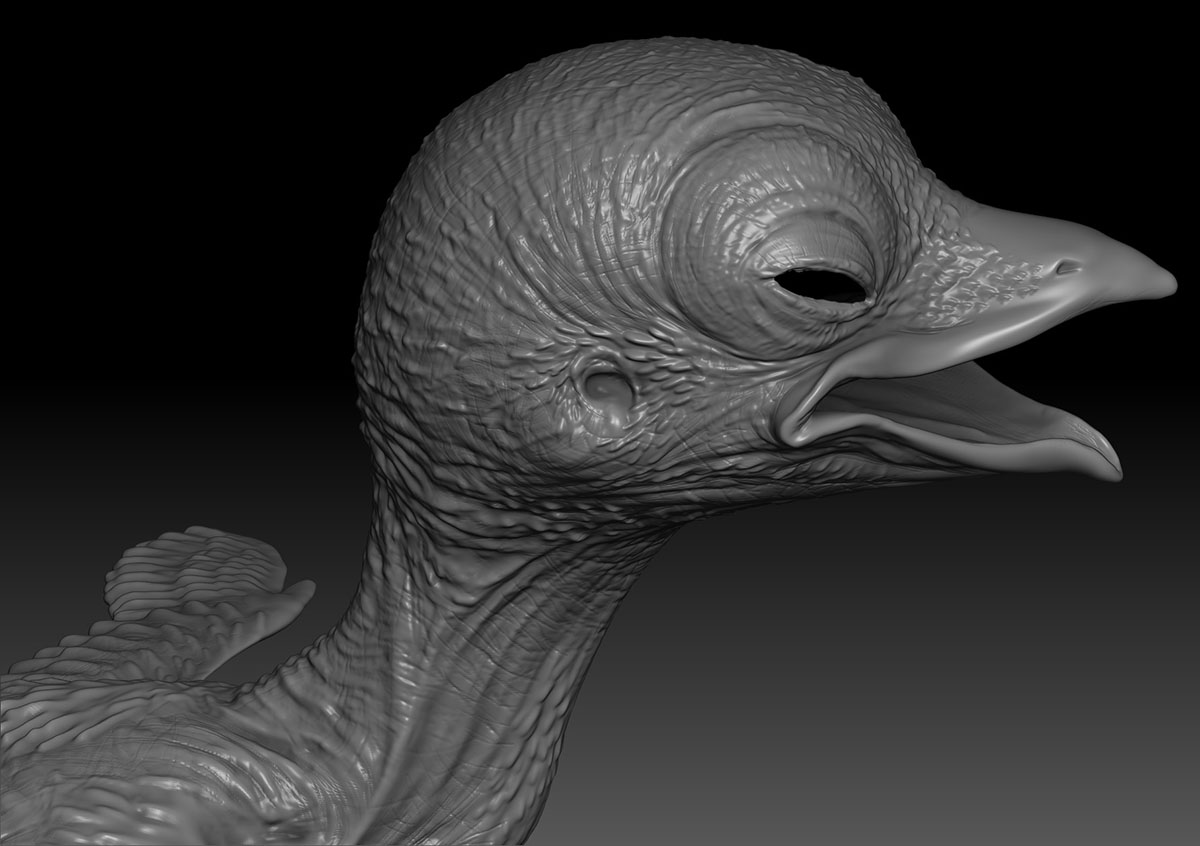
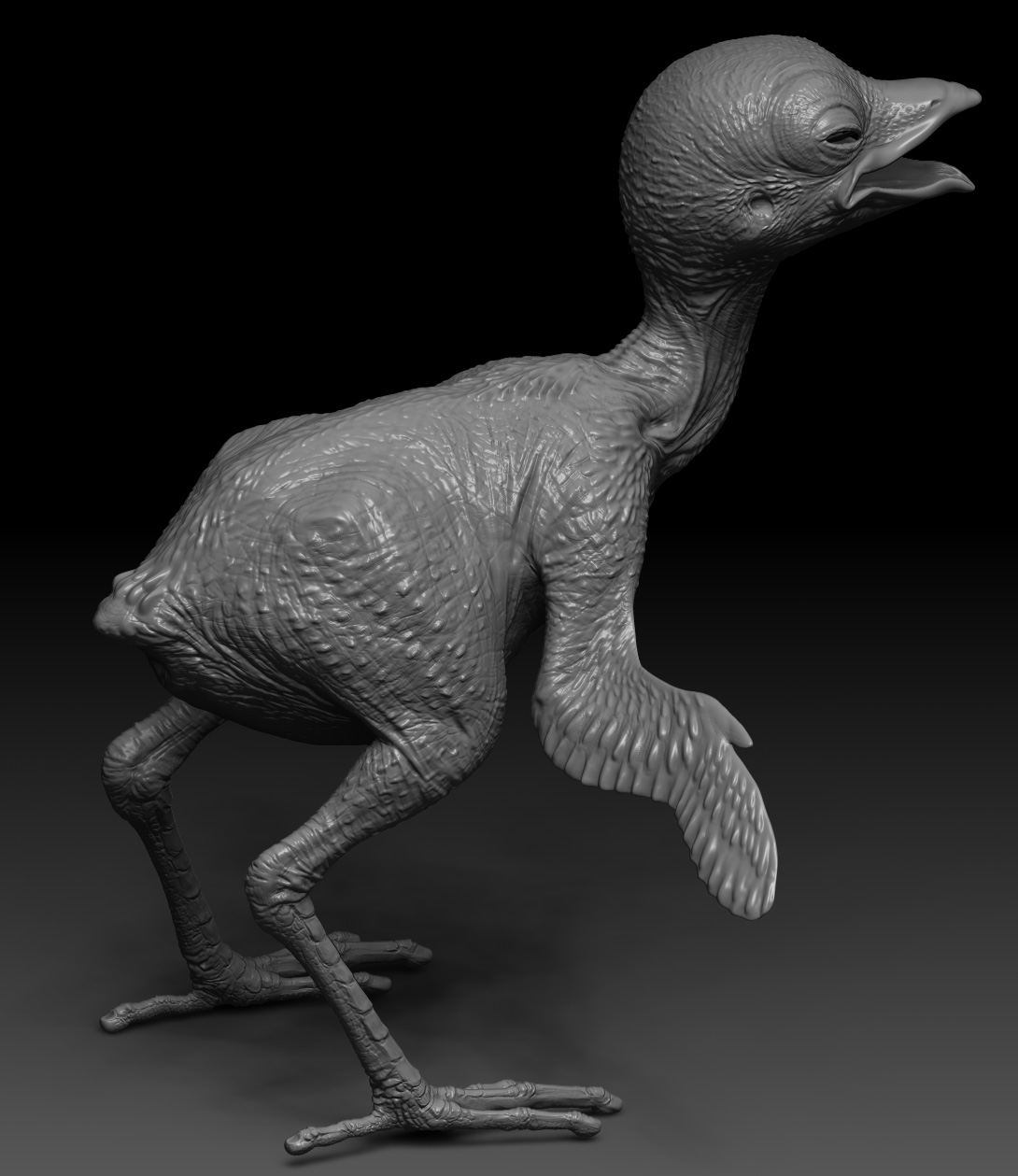
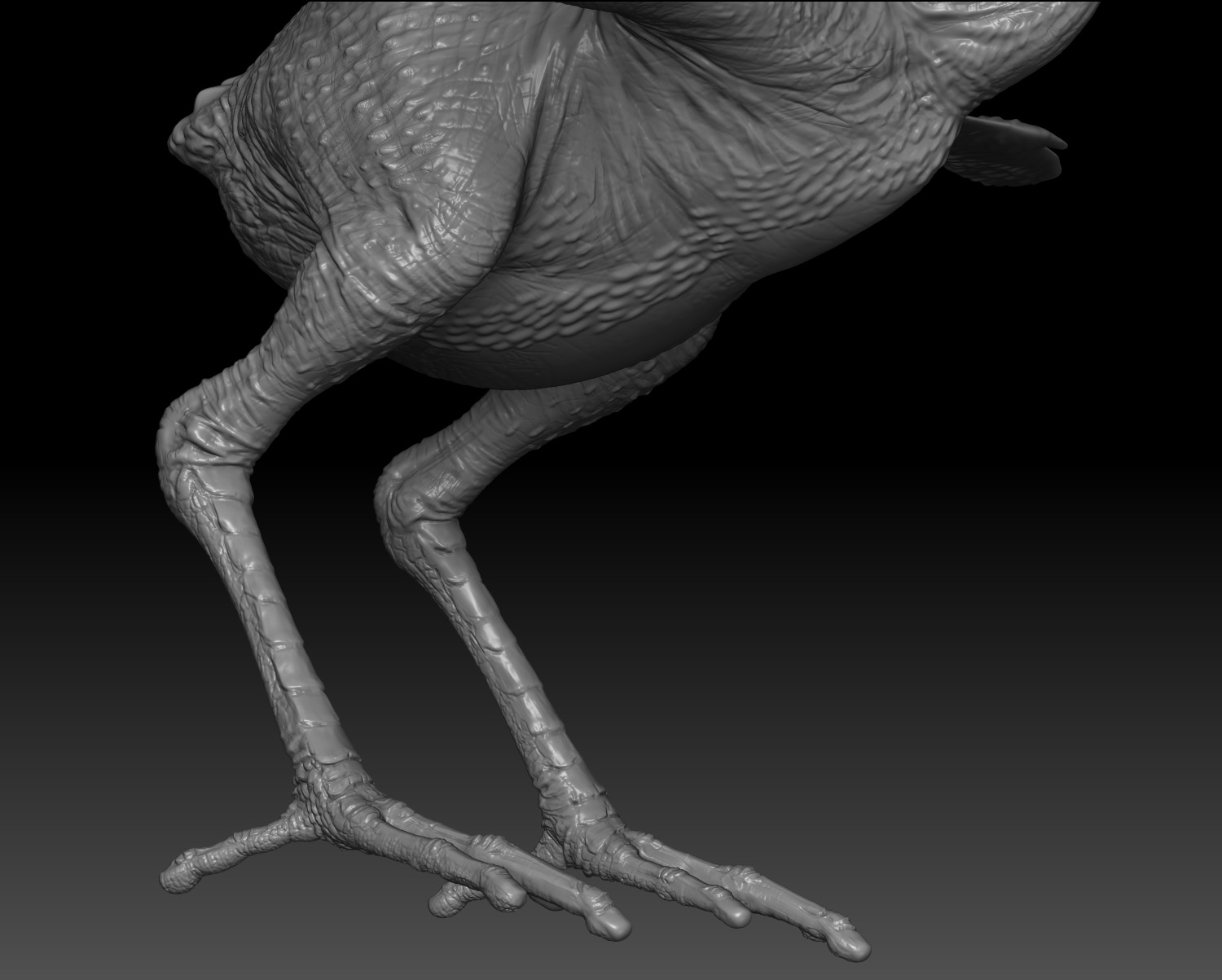
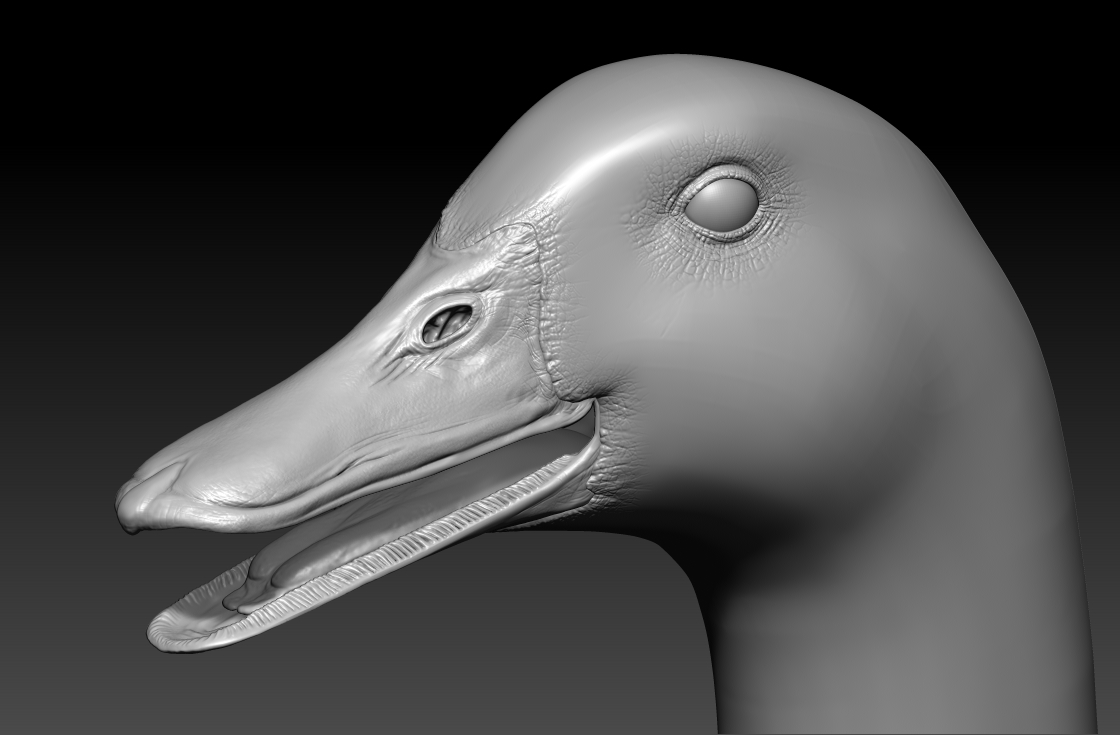
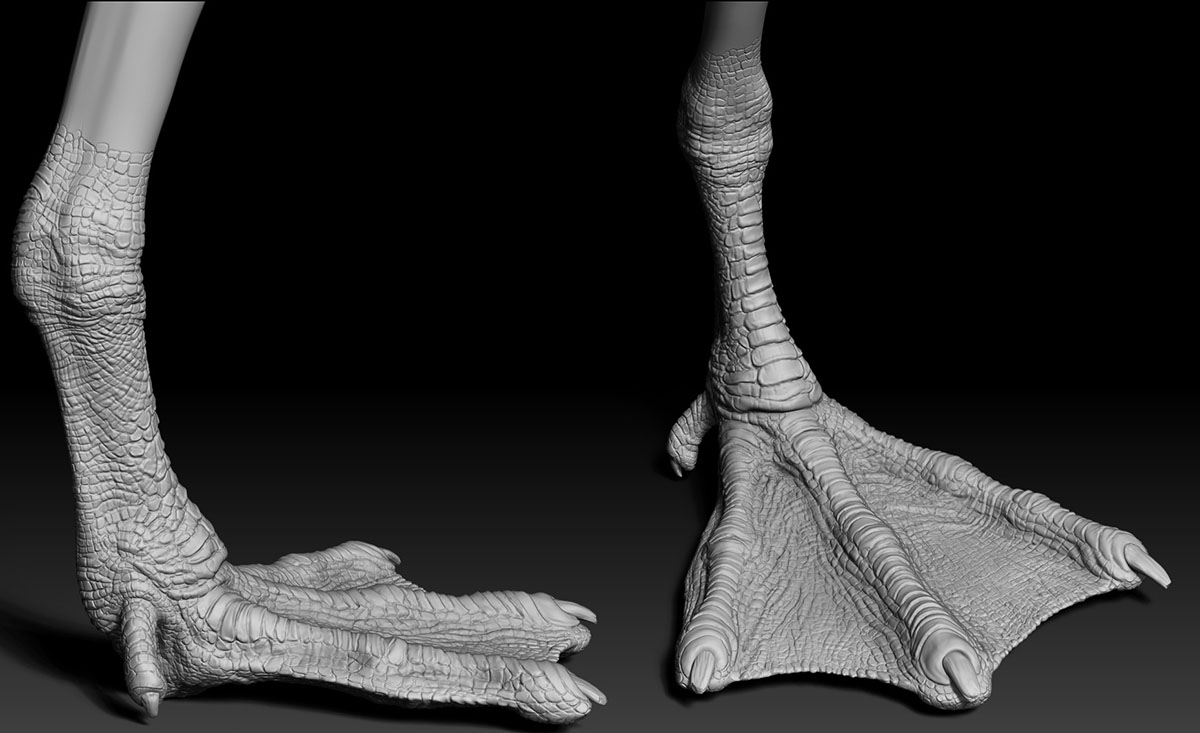
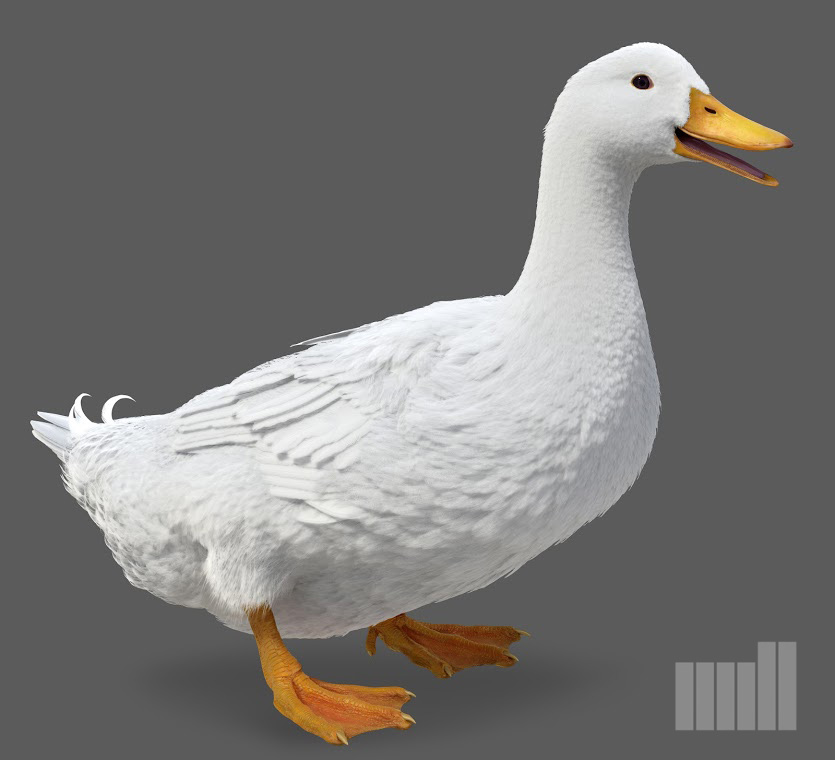
Attachments




I think of this job as toy story 4. I was on the team that modeled this, and did several of the characters. For this job we dynamesh sculpted, and then did retopo after the sculpt was approved. This was a shift from the basemesh then sculpt method that was more popular beforehand.
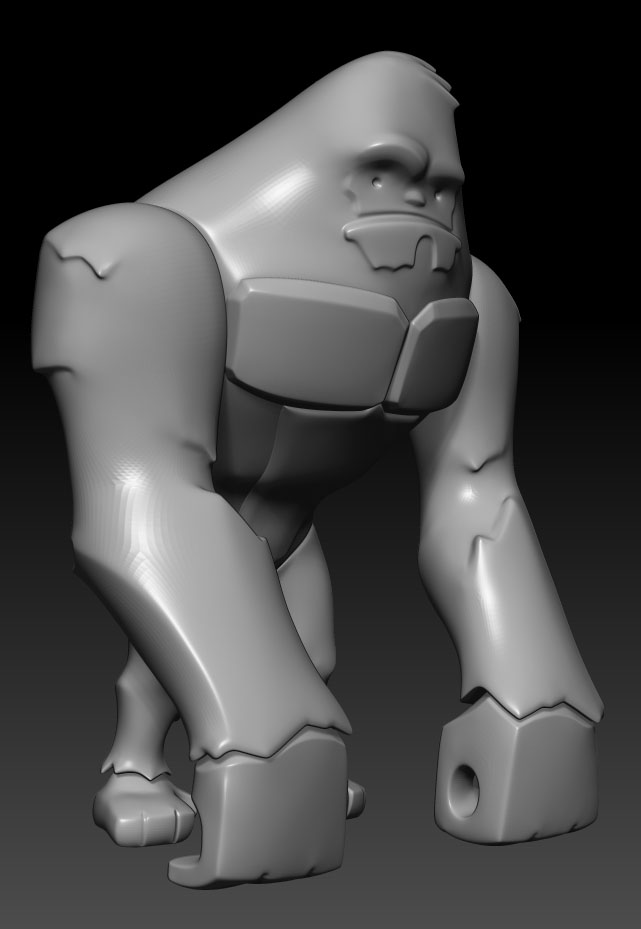
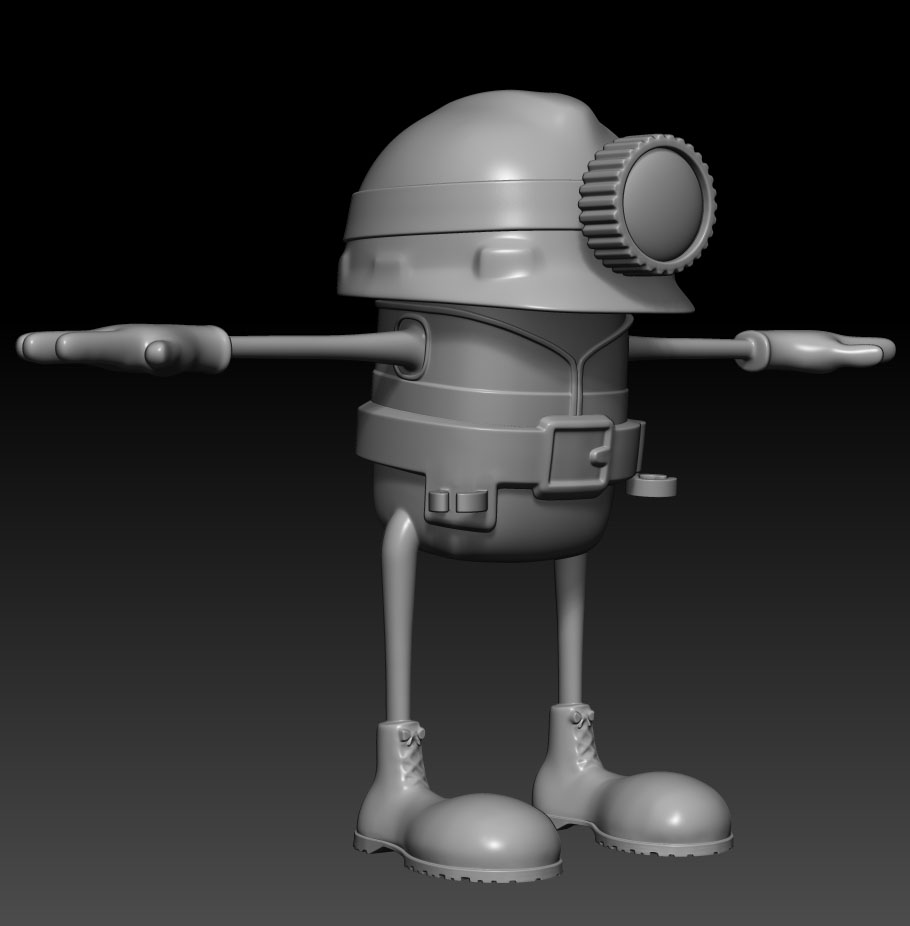
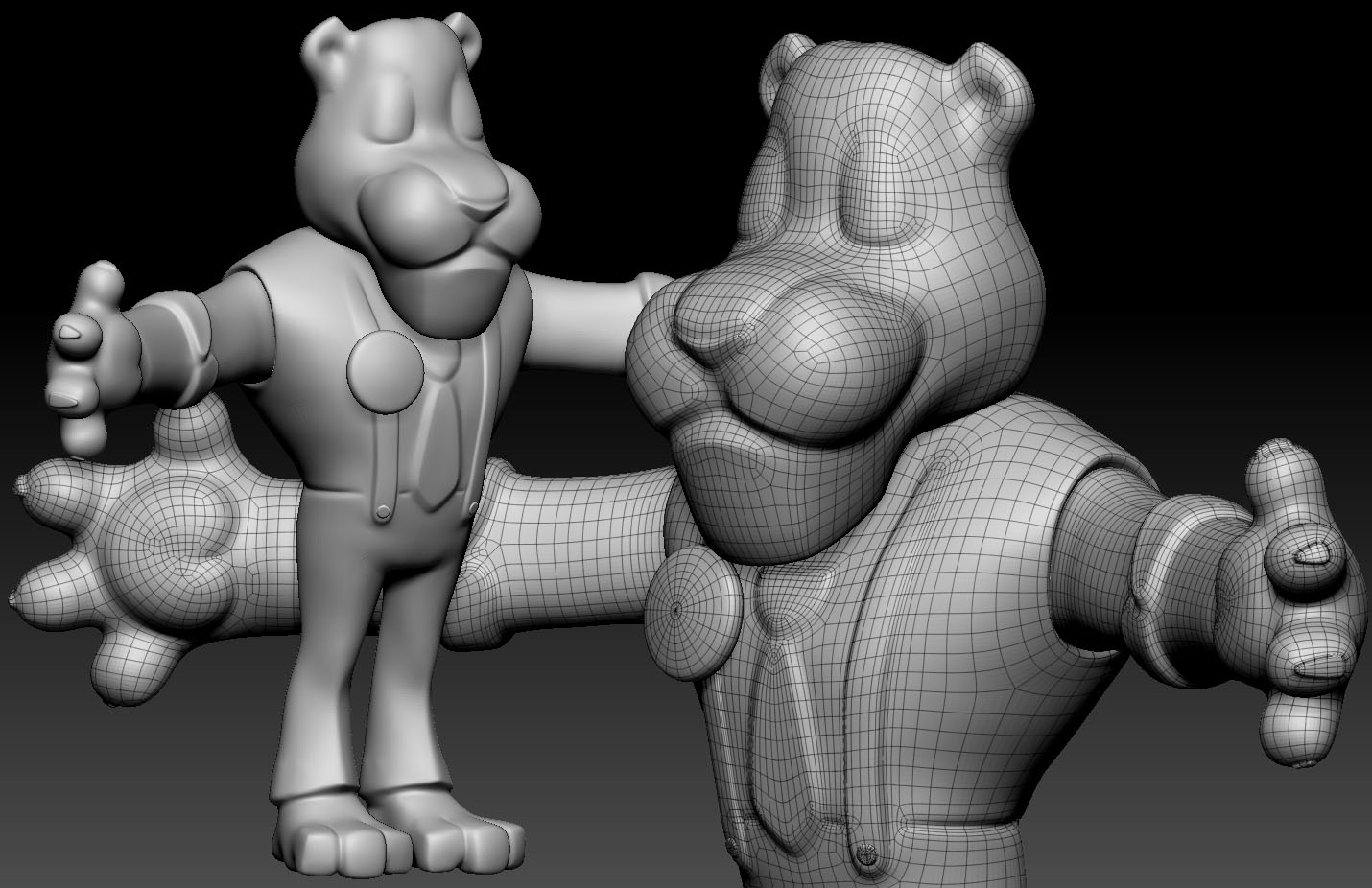
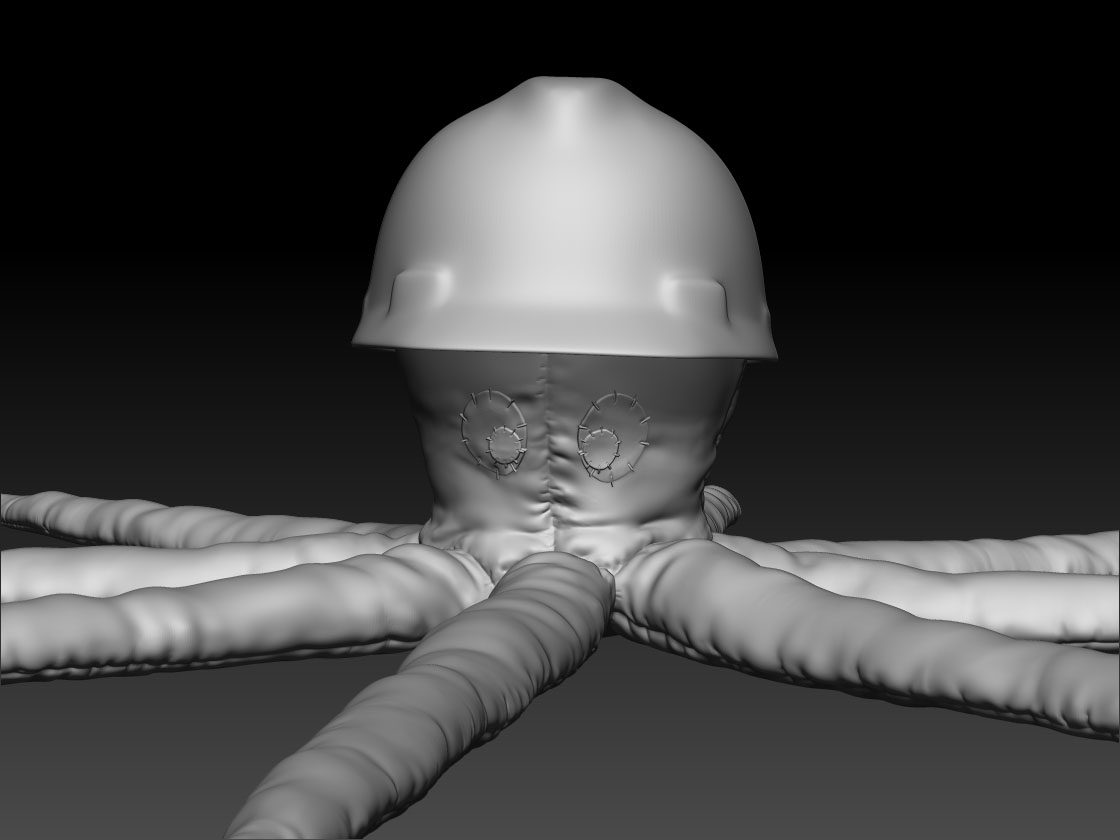
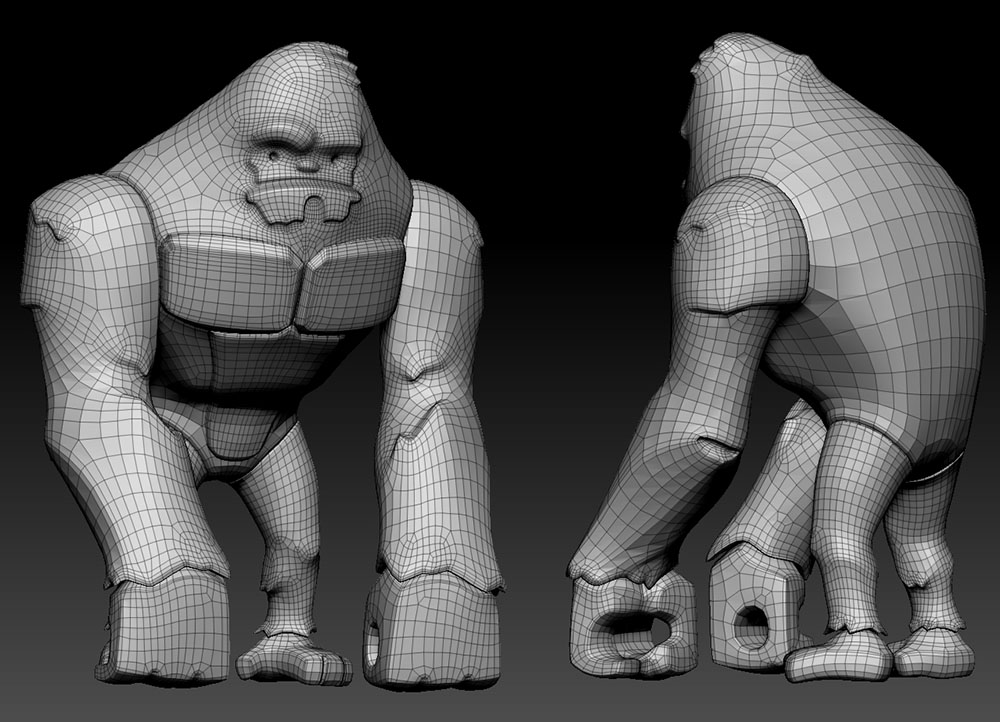
Your stuff is great, and I love the chameleons almost as much as the chimps. Can I ask, at 60 million polys, what is you PC set-up? What have you found to be the best return on hardware investments for big models?
Just EXCELLENT work!
So polycounts. I used to do models in the 2-4mil range. Now depending on the skin detail I go into the double millions. The chimp was around 8-8.5 million division5. At current I don’t go over 8 million on anything without going into HD mode. The interaction is just way too slow otherwise. The chameleons I made with HDgeo in mind so I went into HD mode at 1million. that made the model fast to sculpt. The parts that are slow is the map generation. I don’t go past 8 in anything non HDgeo because the map would probably crash.
what I find myself doing is optimizing my basemesh more and more each project. i rather have a much heavier div1 than be able to reach div6. I find my basemeshes in the 20-30k zone.
I’ve changed my tactic several times in the past few years based on the job and the rendering ability. Before Arnold I would never be able to get the lighters to get displacement right. I would give them maps and end up with something soft. I used to use divi3 plus normal map back in the day. Then with better displacement I’d do multi uvtiles and 32 bit. Now I really love using Vector Displacements. Its not easy but totally worth it if you have a pipeline that supports it. Vector displacement is problematic for the most part because world space looks great, but distorts when you move it and tan is not as accurate. and you can’t do multiple maps without issue. We had to write a custom shader to get Vec Dis to work. Thats how we were able to get the chimp details looking exactly like my sculpt.
I do most of my projects on my laptop. I have an Asus G75, and previous to that I had the g73, I really love my laptop because its cheap, powerful, and quiet. its battery is not awesome but I can do everything on it. If I can’t run my geo on a laptop then there is no way they can render it either. Or I’m doing something in a less than optimal way. I actually limit my hardware a bit on purpose.
Hi Paul, great thread and thanks for the breakdowns of your workflow. As an inspiring creature assets guy I look forward to seeing more of your works and please post more workflow/breakdowns if you can.
Cheers!
John
All extremely splendid and eye poppingly delicious 
WOW!!! I love your work.
I have a question about the ring. What metal did you cast it out of? How did you mount the gems? I’m making a ring for my girlfriend soon to be fiancee and I’m trying to figure out what the best way to approach this is. Thank you so much! All the best. Keep up the great work! 
This is great stuff paul. So if you are doing layers and HD geo, you recommend going no higher than 1 million before jumping into HD. And you can do all the blendshapes in a layer with regular geo and the HD will respect them?
Congrats on the Top Row!
Glad to see you’re finally posting your work here.
Also congrats with the Peta spot. Without your sculpt they would not have received the VES award.
I cant wait to see more of your work on here man.
David E.
That is a Brillant work and really amazing!!!
Great work man! 
Hi there Paul,
I just want to call out again for your thoughts on the pros and cons of using HDgeometry in production. The major concern that I’ve had with doing so is that if a topology change is required on the model for rigging post HDgeometry I don’t think there’s a way to transfer the details sculpted in HDgeometry to a new mesh. Have you and the people you work with worked out a way to deal with this potential issue?
So HDgeo you pretty much lock your basemesh and that really sucks so I don’t go into HD geo till the end when I’m sure. I did learn 2 workarounds recently from Paul Gaboury that have been super helpful.
so 1 huge problem is if I want to scale or rotate my model and I have HD geo then I’m screwed because I can’t show the whole model and if I move it or scale it at my highest regular division then my HD sculpt gets degraded.
the solution
so in the Geometry tab there is a size and a position slider. NOT the deformations tab. The one under the Geometry tab has a different algorithm if you bring in a new scaled/positioned model you can match it by matching the xyz values. Even match the triple decimals if you do it will lock on its quite amazing.
the second problem is if you need to update geo you lose all your hd Dvisions
the solution(difficult but doable)
Polygroups. If you make a polygroup (under max number) you can clone your shape while in HD mode. And it will break it off into a new tool just the chunk but it will recreate new subdivisions. So what you can do is break off the polygroups into new tools and reproject in controlled sections. annoying but doable. Also you need to crease your edges before you break off the chunks.
In a recent project I went into hd mode after division 5(8mil) so I have 1 level of hdgeo which made me have 21-22 mil which was still fast and workable. I felt it was more manageable than the 3 levels of hdgeo that I used for the chameleon.
Anyway Hd geo is still something I only use if I have to have to because there is def restrictions.
Cannot get any better than this, my hat’s off to you sir!
That does sound annoying, but as you say - doable.
Thank you so much for sharing your experience on this topic.
I remember seeing that chimp video, some really nice work dude
So I had some questions about the ring.
Making the ring was a lot of new things I didn’t know about here is some things that you must consider.
1- you must model with a caliper. I made a drawing of what I want and what looks good on screen looks wrong in person and vice versa. Especially when its small. Just like when the parthenon needed to be bulged out to look straight so does prongs and stuff like that.
2-Only the top view matters. design from that point of view. if you want it thin make it thick on the side and thin on top.(I looked at some harry winstons in person). a tiny pin is .7mm, the band should be 1.5mm-2 thick. If you look at a lead pencil core. .5 or .7 you can see how tiny it is. But on screen it will look big.
3- you absolutely need to do prototypes. I did a version in high def plastic. using SLA printer(such as formlabs, or shapeways frosted detail) I used a service but that was before I knew about cheaper options
4 I did wax on a solid scape then brought that wax to the caster. What I didn’t realize was not everything I can print can be cast. my first try was a bust, I needed to reprint the ring in pieces to better accept the plaster during casting. If you bring it into a caster they can tell you more about that.
5 metal choice. I made my ring out of palladium because its very strong, non tarnishing, lighter than gold/platinum, and about half the price of gold. But what I didn’t learn till afterwards is you have to make sure the jeweler you take it to to polish and set the stone knows how to polish the material. white gold has one technique and palladium and platinum need different polishing techniques. Mine got botched in the last step because they were doing it gold style, and left some marks on the surface.
So if you want to to make a ring for your fiancee as well I’d say look for a place that can print wax from a solidscape printer. Scultpeo.com also sells wax and its cheap. then you can take it to a caster. I’m from NY so there are local ones I used carreracasting they can print the wax or cast a wax you give them. I bought the gems on line and the pearls in person(super cheap I found out) especially because I got a lab pink diamond. I made that fancy ring for about 1000 not including my own fees. a ring like that would usually be 15-20k so you can save a lot of money doing it this way.
Really stunning work!!
Cheers,
Selwy
I made some changes to my approach of anatomy after I made the chimpanzee. With that project I needed to make the bones, and muscle and skin. It was a lot more difficult because I modeled 3 layers simultaneously so it was tricky. but the result was a lot more accurate. So I was applying that technique to other things. Below is an owl I made because we needed to make a head replacement, and an owl is almost all feathers. I studied the anatomy and built it out from the inside out which turned out to make a lot of sense and it made me even understand why an owl has to rotate its neck(its eyes are fused to its skull by bone, big night vision lenses)
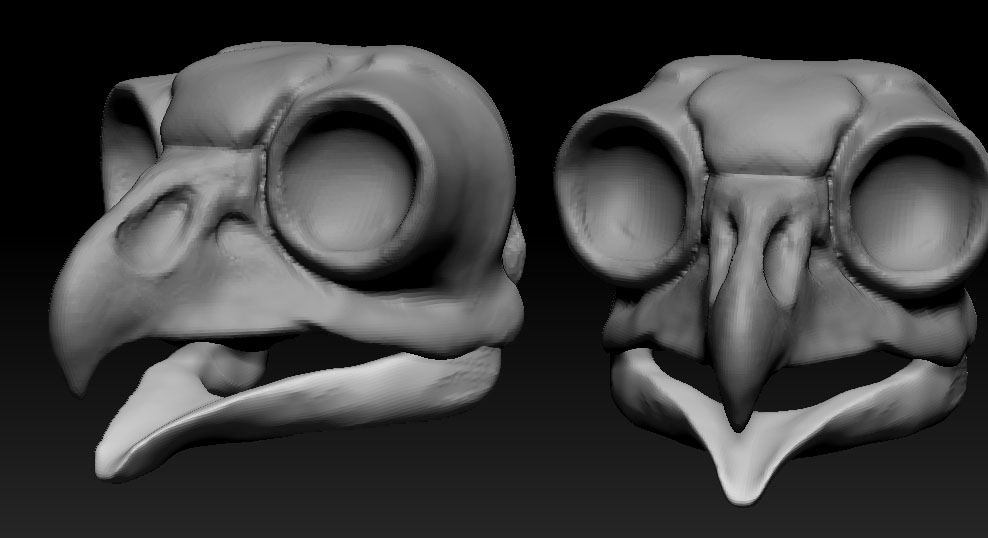
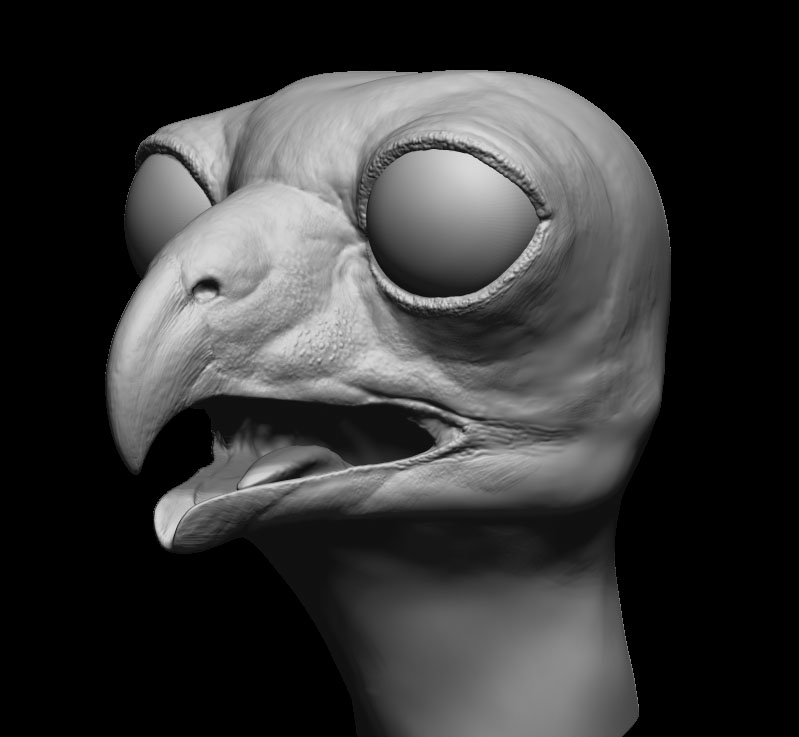
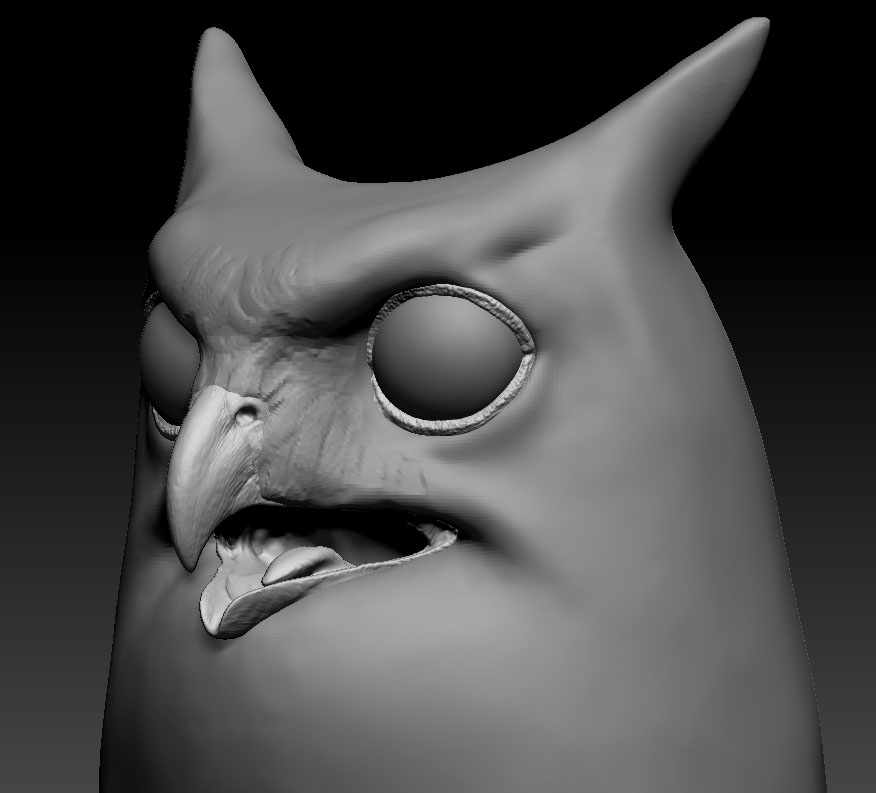
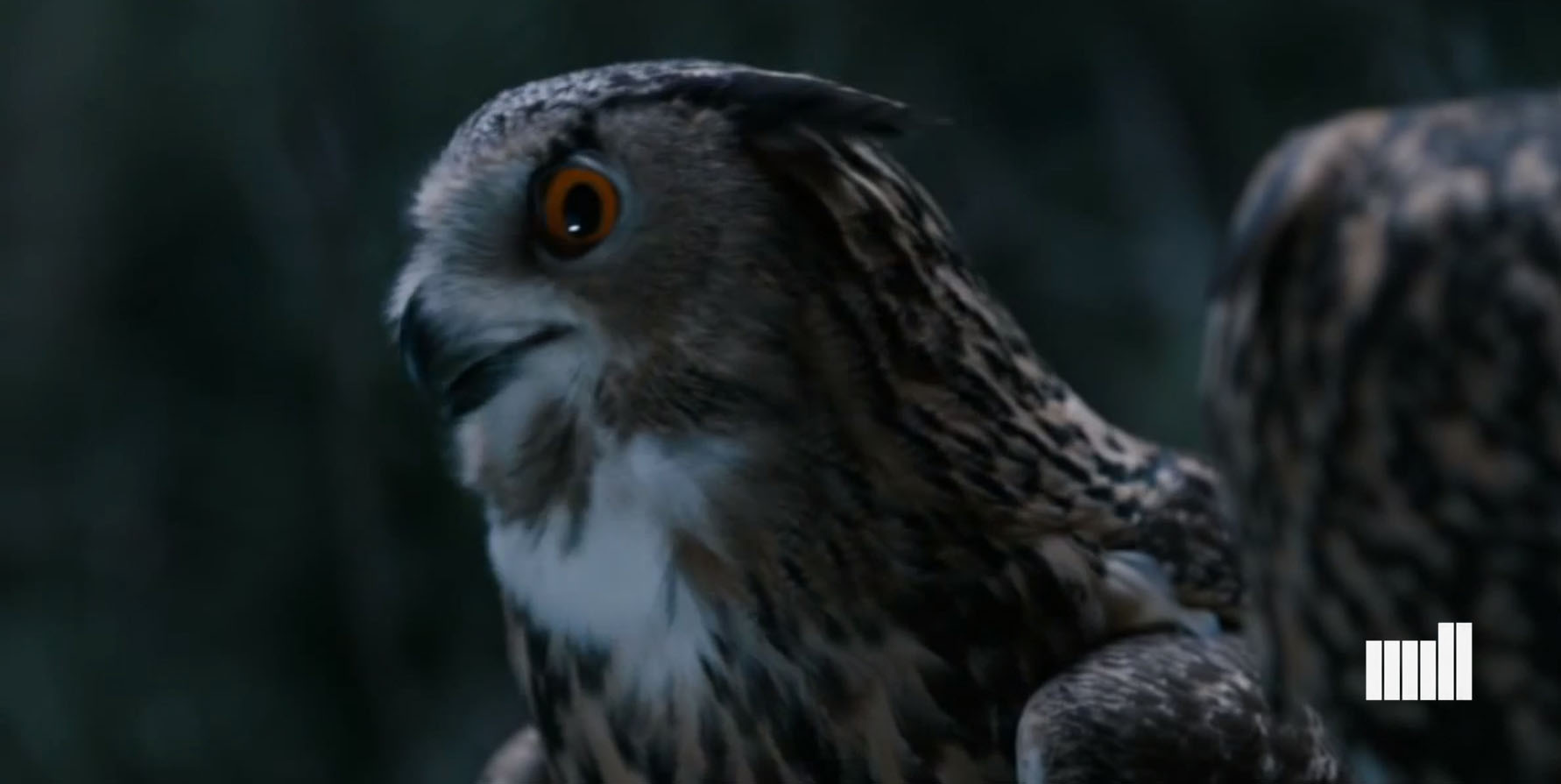
Attachments
